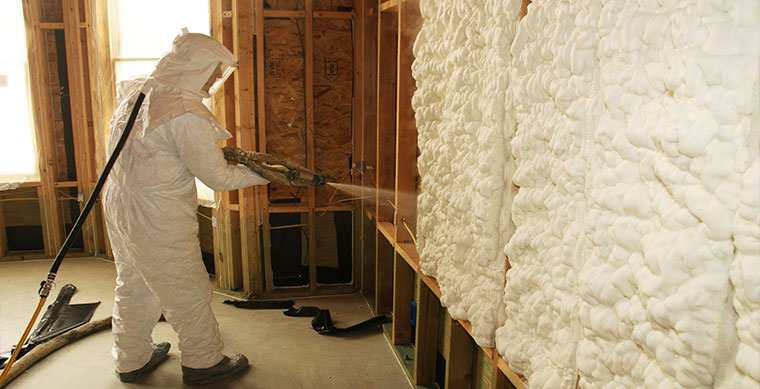
When it comes to insulation services, you want to make sure you're getting the best quality workmanship for your home. Proper insulation is more than just a nicety – it's a necessity for maintaining a com exceptional insulation solutions table living space while saving on energy bills. But what makes quality workmanship, and how do you know if you're getting it? From improved energy efficiency to reduced noise pollution, the benefits of quality insulation are clear. But what are the key signs that your insulation installation is subpar, and how can you avoid common pitfalls to ensure your home stays snug and secure?
Benefits of Quality Workmanship
When it comes to insulation services, quality workmanship can make all the difference in your home's energy efficiency and overall comfort. With proper insulation installation, you can expect to save money on your energy bills each month.
This is because quality insulation prevents heat from escaping during cold months and keeps your home cool during hot months. As a result, your heating and cooling systems won't have to work as hard, reducing wear and tear on your equipment.
You'll also notice a significant improvement in your home's overall comfort. Quality insulation helps to reduce noise pollution and prevents air leaks, making your home feel more snug and secure.
Additionally, proper insulation can help to reduce moisture buildup, which can lead to mold and mildew growth. By choosing a professional insulation service with quality workmanship, you can enjoy a more comfortable and energy-efficient home for years to come.
This, in turn, can increase your home's value and appeal to potential buyers if you decide to sell.
Signs of Poor Insulation Installation
Poorly installed insulation can lead to a host of problems, from increased energy bills to reduced comfort in your home.
If your insulation isn't installed correctly, you may notice gaps or compressions in the insulation material, which can significantly reduce its effectiveness.
You may also see signs of uneven installation, such as insulation that's not fitted snugly around vents, electrical outlets, or windows.
In addition to visible signs, you might also experience issues like drafts, cold spots, or uneven heating and cooling in your home.
If you notice that certain rooms are consistently colder or warmer than others, it could be a sign that your insulation isn't doing its job.
Furthermore, if you've recently installed new insulation but haven't seen a reduction in your energy bills, it may indicate that the installation wasn't done correctly.
Keep an eye out for these signs, and consider having your insulation inspected to ensure it's working as it should.
Key Elements of Quality Insulation
Key Elements of Quality Insulation
Effective insulation installation requires careful attention to detail and adherence to specific guidelines. When you're considering insulation for your home, you want to make sure it's done right.
This means looking for key elements that ensure your insulation is both efficient and effective. First, the insulation material itself is crucial. You want to choose a material with a high R-value, which measures its ability to resist heat flow.
The R-value will vary depending on the type of insulation and the climate you live in.
Another key element is proper installation. This includes ensuring the insulation is properly fitted and sealed around all gaps and openings.
You also want to make sure the insulation is installed in the right location. For example, attic insulation should be installed on the attic floor, not the walls.
Additionally, ventilation is also important to prevent moisture buildup and reduce the risk of mold and mildew.
Choosing the Right Insulation Service
Now that you've identified the elements of quality insulation, it's time to think about who's going to install it. Choosing the right insulation service is crucial to ensure your home is properly insulated and that the job is done efficiently.
You'll want to look for a service that has experience in handling the type of insulation you've chosen. Check their credentials and certifications, and make sure they've a good reputation in your area.
Ask for references and check online reviews to get an idea of their work quality and customer service. A reputable insulation service will also provide you with a detailed estimate and explain the installation process.
Don't be afraid to ask questions, such as what kind of materials they'll be using and how they'll ensure a proper seal. It's also essential to check their licenses and insurance to protect yourself and your home.
Long-Term Savings and Efficiency
A well-insulated home can be a powerful tool in your fight against rising energy costs. By keeping the heat in during winter and out during summer, you can significantly reduce your energy consumption. This not only helps the environment, but it also saves you money on your utility bills. In fact, a well-insulated home can reduce energy costs by up to 30%. This means that if you spend $1,000 a year on heating and cooling, you can save up to $300 annually.
In addition to saving you money, a well-insulated home is also more efficient. It maintains a consistent temperature, reducing the strain on your heating and cooling systems.
This can extend the lifespan of your equipment, saving you money on repairs and replacements. Moreover, a well-insulated home is also more comfortable. It reduces noise pollution, prevents moisture buildup, and creates a cozy living space.
Conclusion
By investing in quality workmanship for your insulation services, you'll enjoy a snug and secure home with reduced energy bills and wear and tear on your heating and cooling systems. You'll also minimize the risk of mold and mildew growth and reduce noise pollution. In the long run, you'll save money and reap the benefits of a well-insulated home. It's time to prioritize quality workmanship and start enjoying a comfortable and efficient living space.
